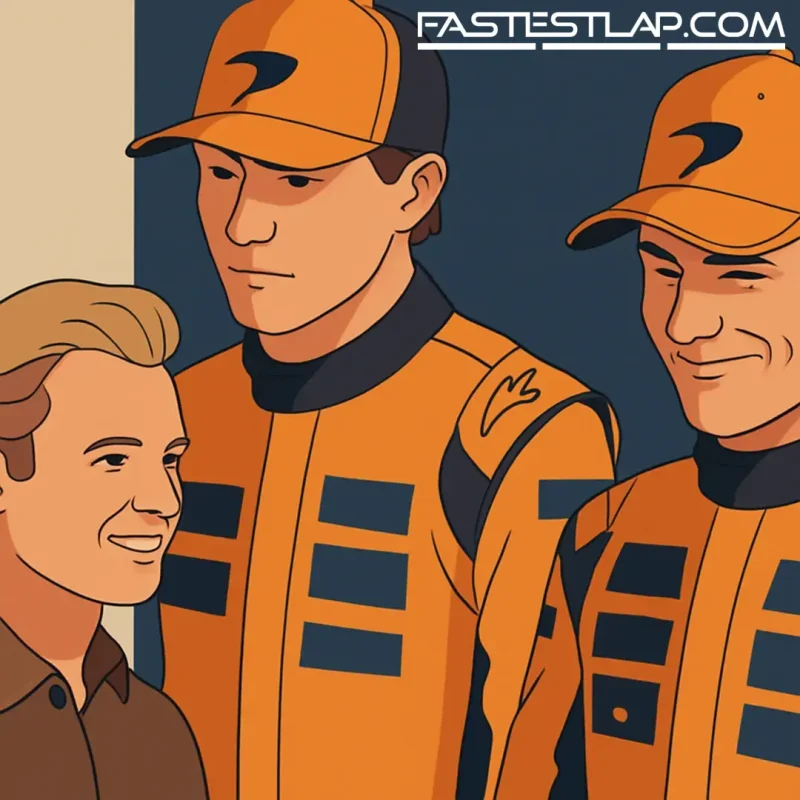Rosberg on McLaren’s Monza swap: Slow stops are “part of racing,” and you can’t police them
Nico Rosberg has waded into McLaren’s Monza fallout, and his take is the one most drivers and team bosses quietly live by: pit stops — even the ugly ones — are part of the game.
McLaren’s late-race call at the Italian Grand Prix to have Oscar Piastri hand second place back to Lando Norris set off the familiar team-orders debate, but it was the context that stung. Norris had been running a comfortable P2 behind Max Verstappen before his final stop dragged on with a front-left wheel nut drama. Piastri, who’d been assured there’d be no undercut, had already banged in a clean, rapid stop and jumped him. Then came the instruction to swap.
Piastri questioned it on the radio, pointing out the team’s own pre-race line that pit stops are “part of racing.” He moved over anyway, finishing tucked in behind Norris. Verstappen laughed about it over the radio. The paddock did double-takes. And Rosberg, speaking on Sky’s F1 Show, essentially said: that’s why this is messy.
As the 2016 World Champion explained, every team talks about this stuff before a race, and almost all of them arrive at the same answer. You can’t start recalibrating finishing orders based on how cleanly the wheel guns went on Lap 41. Stops vary. They always have, they always will. And once you open the door to correcting for a slow release or a sticky nut, you’re chasing tenths with a calculator and an angry debrief until the lights go out next Sunday.
That’s what makes McLaren’s call awkward. Internally, the understanding had been that pit stop variation is baked into the sport. Externally, the optics are worse: the team effectively unwound the consequences of a slow stop by telling the lead car on the road to shuffle back behind his teammate. Even if you accept the intent — to restore the pre-stop order — it cuts against the very principle the drivers had been told would stand.
There’s also the championship layer. McLaren aren’t adjudicating a scrabble over fifth and sixth; they’re managing a title fight between two of the fastest young drivers in the field. That’s a delicate ecosystem on the best of days. One radio message can shape a relationship. One “after you” can become a file note that resurfaces when the pressure tightens in the flyaways.
None of this is new, of course. Team orders are as old as team racing. The outrage meter tends to spike when the reason feels administrative rather than sporting. If Piastri had been told to move aside because he was on a different strategy and Norris was quicker, you could at least hang your hat on pace. When the fulcrum is a wheel nut, the logic gets harder to sell — especially after you’ve told both drivers to treat pit stops as fate.
Rosberg’s view cut through the noise. Pit stops are inherently variable, so you cannot — and should not — try to police them by reassigning positions late in a Grand Prix. It’s not enforceable, and it’s not what the sport is about. The team’s job is to be as bulletproof as possible; the drivers’ job is to live with what happens when it isn’t.
For McLaren, this becomes a test of internal alignment more than public perception. If the policy truly is that stops are part of racing, then codify it, stick to it and absorb the pain when it goes against you. If, instead, the stance is “restore the pre-stop order when feasible,” then be explicit about that too. Drivers can accept most things — traffic, strategy flips, even stiff orders — as long as the rules are clear before the visor goes down.
The irony is that both Norris and Piastri handled the thing like grown-ups in the cockpit. One questioned, one benefited, both banked big points. The friction sits in the middle — in the message that contradicted the brief. And that, not the outcome, is what gnaws at racers.
There’s no doubt McLaren have the car and the driver pairing to go the distance this season. The trick now is keeping the lines straight when the margins get wavy. Because there will be more moments like Monza. There always are. And when the next slow stop bites at 280 km/h, better that the drivers know precisely where the team stands — and that it won’t change with the spin of a wheel nut.




